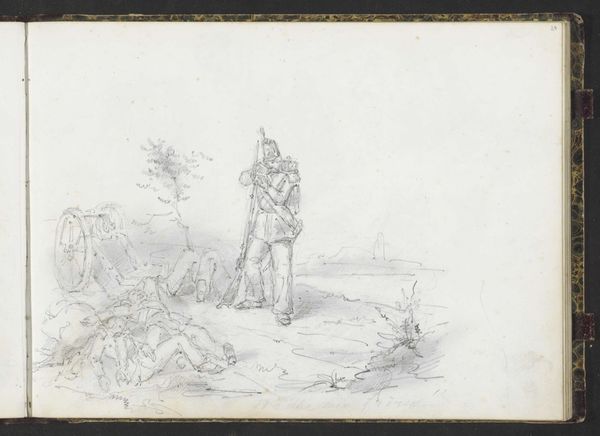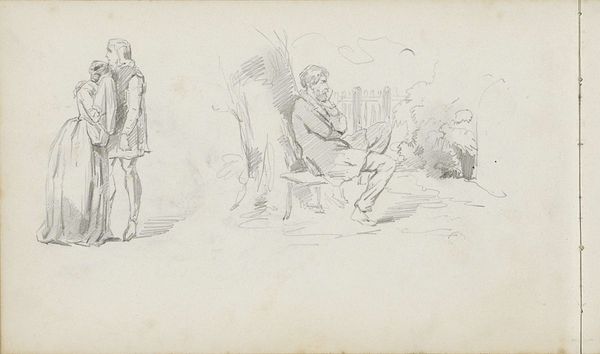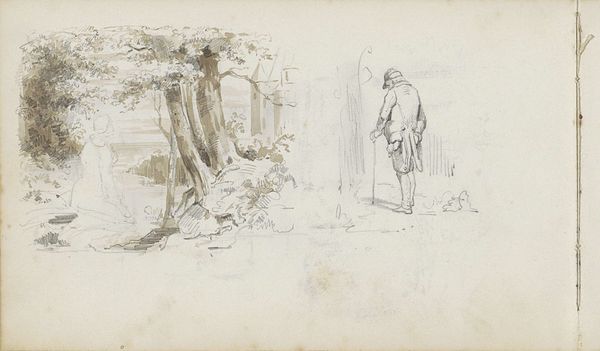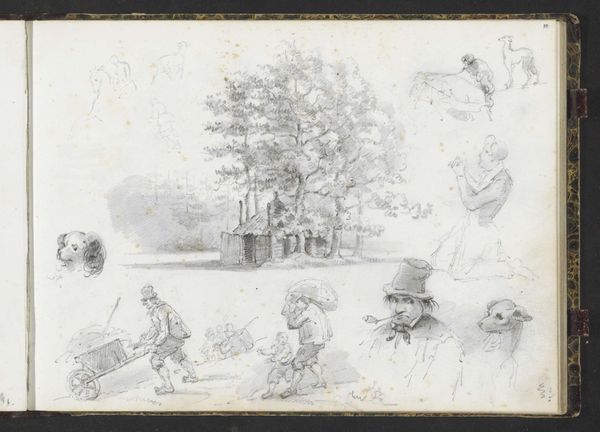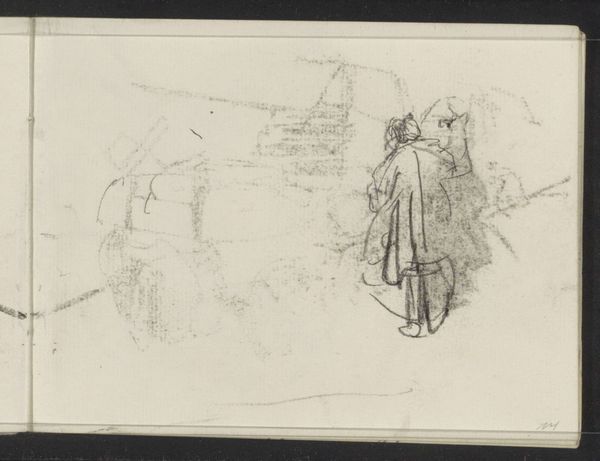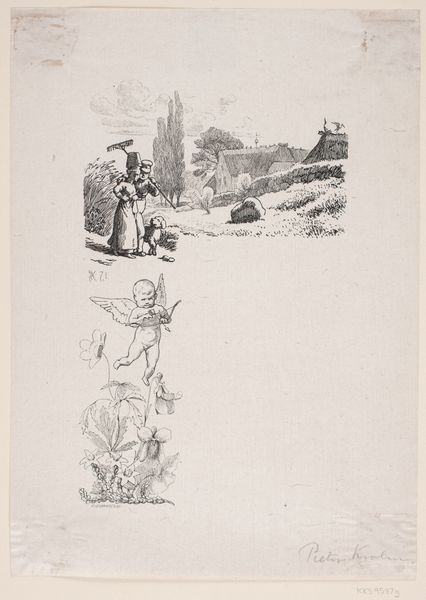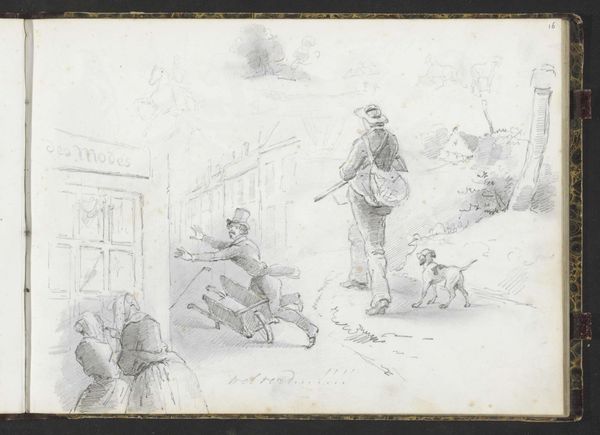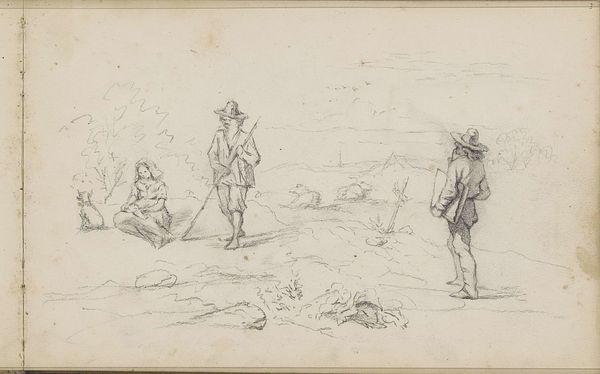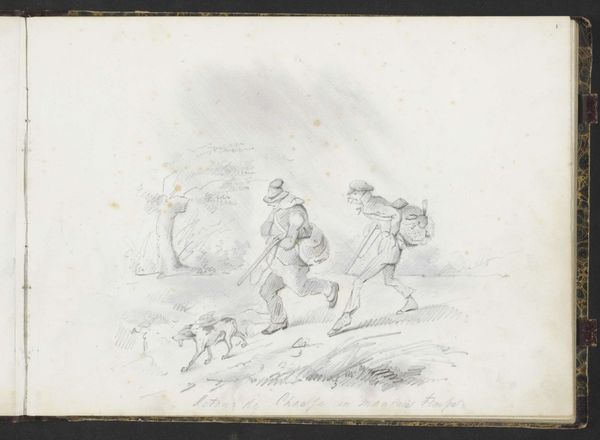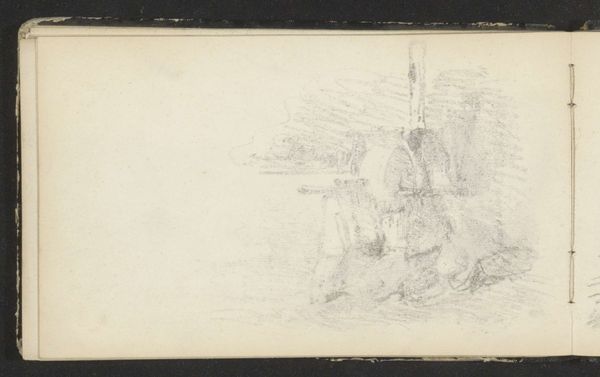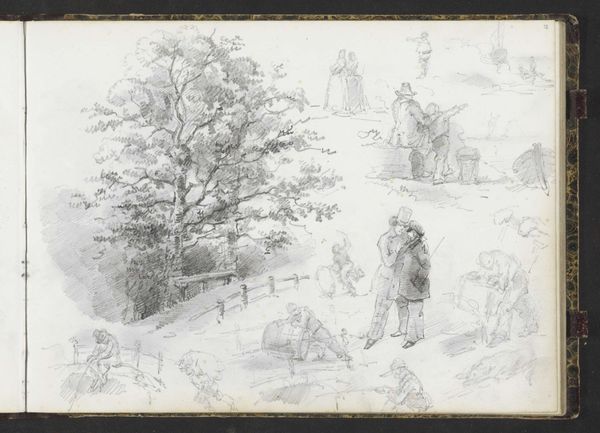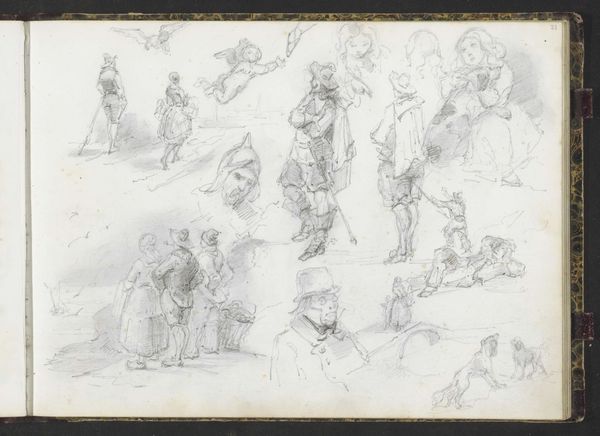
drawing, paper, pencil
#
portrait
#
drawing
#
landscape
#
paper
#
coloured pencil
#
pencil
#
cityscape
#
genre-painting
#
realism
Copyright: Rijks Museum: Open Domain
Editor: This work is titled "Boom, kop van een kind en een straatscène" by Lambertus Lingeman, and the provided date range is 1839 to 1894. It seems to be made with pencil, maybe with some colored pencil on paper. It looks like a sketch, a glimpse into daily life... What captures your attention in this seemingly simple piece? Curator: This is an interesting document. Look closely at the way Lingeman employs pencil—the graphite itself. See how it is used to depict not only the figures and the landscape, but also class divisions within the mid-19th century Dutch society? Editor: Class divisions? Curator: Absolutely. Observe the figure in the high hat, presumably middle or upper class, set apart from the gaggle of children nearby. Now, consider the paper itself - likely mass produced but still a commodity. Think about who had access to these materials, who could afford the leisure to sketch such scenes. Lingeman’s work becomes not just a representation of the street, but a record of a specific mode of production and consumption. Editor: That makes a lot of sense. So, it's not just about *what* he's drawing, but also the *how* and *why*, considering the materials and context. It gives new weight to a humble sketch. Curator: Precisely. Even the "unfinished" quality is relevant. It implies the everyday, the transient nature of experience, captured through the readily available technology of pencil and paper. It reflects the emerging industrialized world and how it shaped artistic practice. What do you make of the tree itself? Editor: I originally saw it as just background scenery... Curator: But doesn’t the rendering also show access to natural space in a developing urban environment? It all builds a compelling commentary about materials, production, and lived experience. Editor: This approach really opens up new ways of thinking about even seemingly simple sketches. I see how the context and materials become just as important as the subject. Thanks for illuminating that for me. Curator: My pleasure. Considering these factors transforms our understanding and invites deeper appreciation for the artwork’s layers of meaning and significance.
Comments
No comments
Be the first to comment and join the conversation on the ultimate creative platform.
